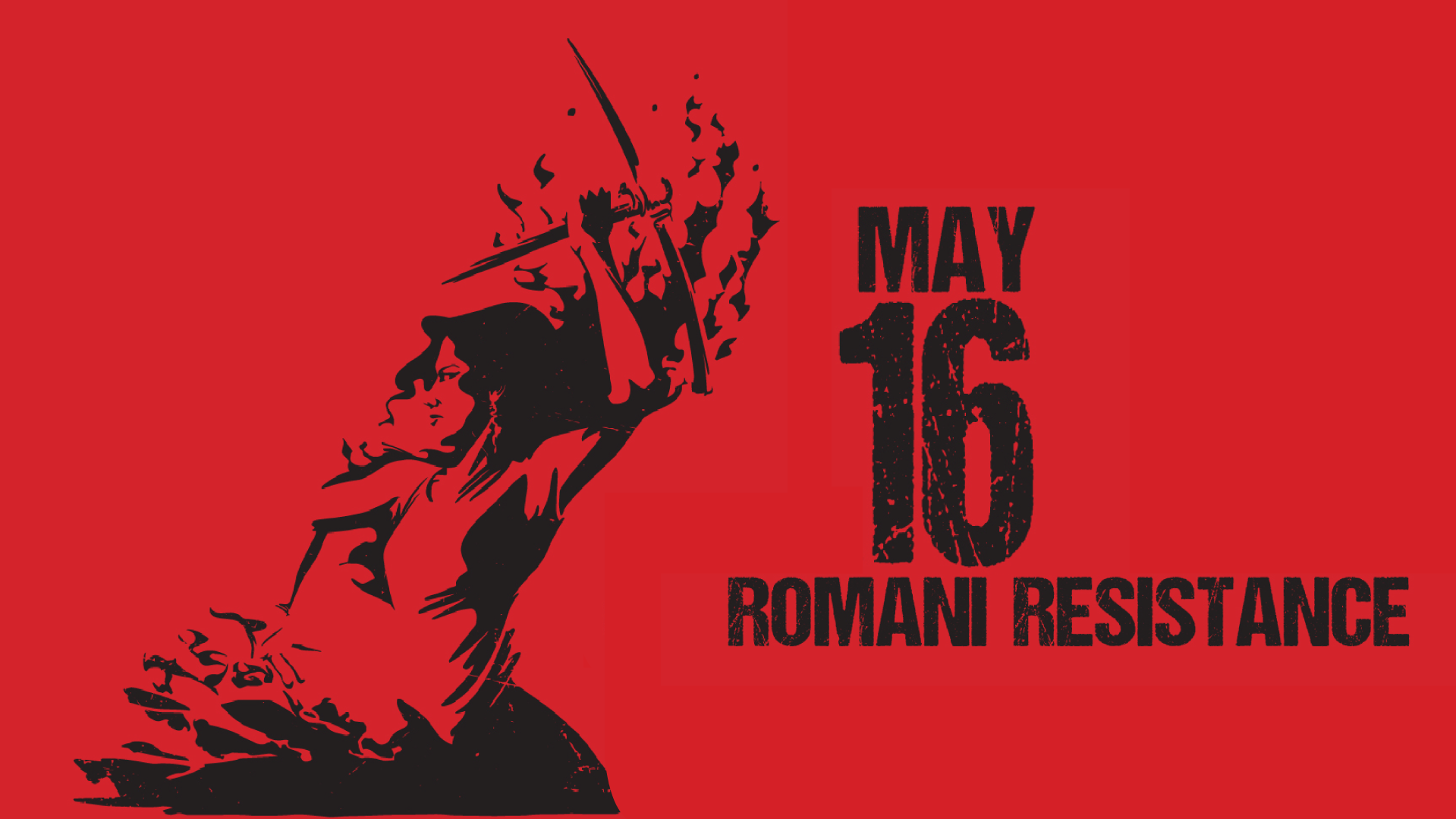Soon after the start of the Second World War in 1939, the Νazi Regime decided to remove all Roma and Sinti from the territory of the Third Reich. They were ordered to resettle and were placed in Jewish ghettos and camps for Jews. The first deportation took place on 16 May 1940 from Ravensburg to camps in occupied Poland.
On 16 December 1942, the deportation of all remaining Sinti and Roma was ordered. The Gypsy family camp known as the “Zigeunerlager” was set up in Auschwitz-Birkenau sector BIIe.[1] The Zigeunerlager was a "mixed" camp, with men, women and children imprisoned together.
On 15 May 1944, the 6000 Roma in the camp were warned that the Nazis were planning their execution. On 16 May 1944, more than 600 Roma prisoners did not show up for the usual morning roll call but barricaded themselves into their barracks. They had broken into an equipment warehouse and armed themselves with hammers, pickaxes and shovels, and taken apart the wooden sections of the bunks they slept on to make weapons. As a result of their defiance, no Roma or Sinti died in the gas chambers on that day. This act of resistance troubled the Nazi Regime. Fearing a camp-wide revolt, 3000 Roma were transferred to other camps. On 2 August 1944, the Nazis gassed the remaining 3000 Roma prisoners in the Blle camp.
The courageous revolt of 16 May 1944 – a fight for the right to life and humanity - is widely referred to as Romani Resistance Day.
The Council of Europe Youth Department has dedicated an entire chapter on “Resistance” in the Right to Remember Handbook for Education with Young People on the Roma Genocide.[2]
Remembrance plays an importance role in the process of coming to terms with what happened and commemorative practices help to ensure reconciliation, healing and non-repetition of the crimes of the past. Only memory of rights violations can nurture the future of human rights in the world, thus providing a substantive link between past and future[3] and a change in the narrative about Roma people.
“May 16th is the reminder that there is no destructive force which cannot be opposed. In a 1940s Europe awed by the overarching National Socialist rule and the tacit complicity of so many countries, resistance was not even dreamed of. With racial laws justifying the atrocious treatment of groups deemed to be not worthy of living along with the superior race, and overt annihilation strategies, the hierarchy of state led production of knowledge invaded every field of existence, to the most basic elements that sustain life. However, uprising appeared where most unexpected, in defiance to a monstrous rational model that had to prove efficient in the efforts to dispose of millions of people. On the night of 16th of May 1944 in the Auschwitz-Birkenau concentration camp, the entire Roma population of the camp revolted against their aggressors, in a desperate attempt to defend themselves from sure death. The testimonies of the survivors from the neighbouring camp reveal a story that was only rarely told, a story of the Pharrajimos and its victims who fought, until the last moment, for their right to life and humanity.” Mihai-Alexandru Ilioaia – Holocaust survivor [4]
[1] Sinti and Roma (Gypsies) in Auschwitz: http://auschwitz.org/en/history/categories-of-prisoners/sinti-and-roma-gypsies-in-auschwitz/
[2] Right to Remember - A Handbook for Education with Young People on the Roma Genocide: https://rm.coe.int/168008b633
[3] Huyssen, Andreas (2011) "International Human Rights and the Politics of Memory: Limits and Challenges," Criticism: Vol. 53: Iss. 4, Article 6
[4] 16 May: Romani Resistance Day - https://romediafoundation.wordpress.com/2016/05/16/16-may-romani-resistance-day/



